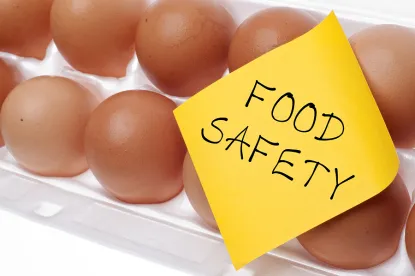-
The Food Safety Modernization Act (FSMA), enacted on January 4, 2011, set deadlines for the U.S. Food and Drug Administration (FDA) to (1) designate high-risk foods for which additional recordkeeping requirements are appropriate and necessary to protect the public health; and (2) publish a notice of proposed rulemaking to establish recordkeeping requirements for facilities that manufacture, process, pack, or hold such foods. The FSMA also required FDA to publish the list of foods designated as high-risk on FDA’s website at the time the Agency promulgates the final rule establishing recordkeeping requirements.
-
On October 15, 2018, the Center for Food Safety (CFS) and the Center for Environmental Health sued FDA alleging that the Agency violated the FSMA and the Administrative Procedure Act by failing to meet the statutory deadlines and to publish the list of foods as described above. The complaint sought a judgement requiring FDA to take actions described in the statute pursuant to a court-ordered timeline.
-
In a Consent Decree, filed on June 7, 2019, FDA agreed to a schedule for FDA action, including:
-
Sept. 8, 2020 – Deadline for FDA to designate the list of “high risk” foods as required by the FSMA Section 204(d)(2)(A).
-
Sept. 8, 2020 – Deadline for FDA to publish a proposed rule, including record-keeping requirements for high-risk foods, also as required by FSMA Section 204(d)(2)(A).
-
Nov.7, 2022 – Deadline for FDA to issue a final rule, including record-keeping requirements for high-risk foods, also as required by FSMA Section 204(d)(2)(A).
-
-
In February 2014, FDA previously put out a Draft Approach for Designating High-Risk Foods, which outlined several criteria for designating a food as high-risk: (1) outbreak frequency and illness occurrence, (2) severity of illness, (3) likelihood of microbial or chemical contamination, (4) microbial growth potential/shelf life, (5) the probability of contamination and steps taken during manufacturing to reduce contamination, (6) food consumption patterns, and (7) economic impact. Whether the Agency will utilize its draft approach to develop its list of “high risk” foods remains to be seen.
Deadlines Set for FDA to Establish Reporting Requirements for “High-Risk” Foods
Tuesday, June 11, 2019
Current Public Notices
Published: 28 August, 2025
Published: 25 August, 2025
Published: 25 August, 2025
Published: 25 August, 2025
Published: 25 August, 2025
Published: 22 August, 2025
Published: 20 August, 2025
Published: 20 August, 2025
Published: 18 August, 2025
Published: 18 August, 2025
Published: 15 August, 2025
Published: 14 August, 2025
Published: 12 August, 2025
Published: 11 August, 2025
Published: 8 August, 2025



 />i
/>i
